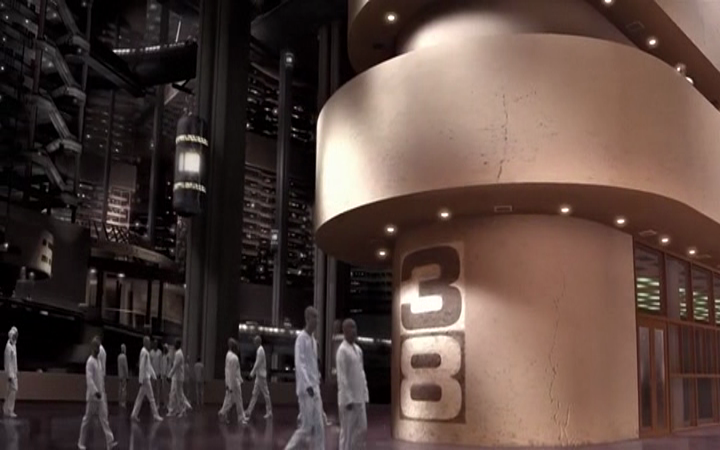-
#12 – THX-1138 (1971)
THX-1138 (1971)
Film review #12
Director: George Lucas
From the creator of Star Wars comes a science-fiction film exploring the darker side of the imagined utopia…
THX 1138 envisions a future where everything is automatised. It is a departure from the traditional utopian visions of American culture, such as Buck Rogers in the 25th Century, of which a clip is shown at the start of the movie. This is a very clever way of questioning our pre-conceived notions of the future.
The story centres around a man named THX 1138, who is a resident of a futuristic society, where the populace is forced to take drugs to suppress their emotions in favour of efficiency, productivity and order. THX unknowingly stops taking his drugs thanks to his roomate LUH, who he starts to have feelings and impulses for. He also meets SEN, who is able to hack into the mainframe of the city to get things he wants. After THX nearly causes a meltdown after not taking his drugs and therefore being unable to perform at his job, he is put on trial and sentenced to confinement. After which he tries to escape the city and find LUH.
I think the most important aspect of THX 1138 is how de-humanised everything is: Sterile white walls cover everything, the only colour being in the pills the citizens take. There are no personal effects, the living quarters are as empty as everywhere else, and everyone has a shaved head, so identity is suppressed at every level possible. This shows in the dialogue in the movie too, which is staggered, fragmented, and just plain unnatural. Even the police force which enforces the law is made entirely of robots: People building there own regulators and taking the notions of justice out of their own hands seems to show a system where technology has taken control. The film could perhaps be seen as a commentary on communism and the power of the state too?
Even the notion of religion is seen as controlled by the all powerful computer. OHM 1190 is the state-sanctioned religious icon, and booths are available around the city for the residents to talk to and confide in, to which OHM will occasionally spout computer generated phrases such as “Yes, I understand” or “Excellent”. These booths are adorned with an image of Jesus as depicted in Hans Meming’s painting Christ Giving His Blessing (1478), which further that notion of a religious icon. Though one has to wonder what use a religious icon is in a city where every aspect of humanity is suppressed? Perhaps its random computer generated responses are appropriate for a population without humanity, and it is another way for the state to spy on people…Being made in 1971, the movie still stand the test of time well, possibly because there is not much in the movie which can age. Everything is neutral and bland by design, and so is resistant to ageing in the eyes of the movie-goer. Another reason for its lack of ageing may be the fact that I watched the directors cut, which has updated CGI and some re-filmed sequences, of which the director George Lucas is notorious for editing and touching up his old films (See the uproar over the constant remastering of Star Wars).
So overall, we have a very disturbing vision of society in the future in THX 1138, its strange, inhuman concepts address just what it means to be human amidst our technology, and whether that technology could ever control us? It seems to me that as a departure from the views of the future in American culture at that time, THX 1138 serves as a powerful alternate perspective on the future and still maintains that relevancy today.









